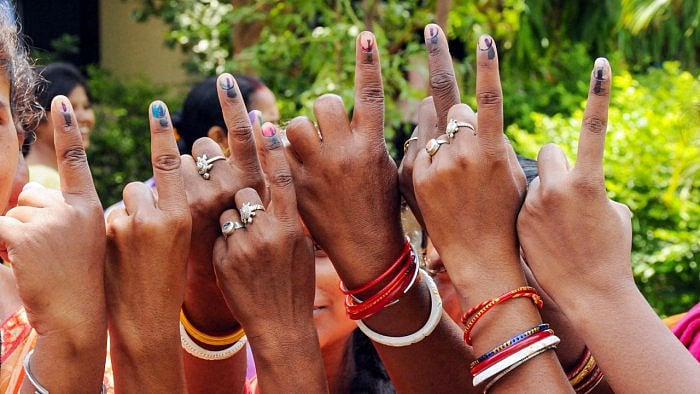
Ahead of Assembly elections in Meghalaya, several issues are cropping up in the tribal state - a key one being the decades-old demand for separate statehood by the tribals in the northeastern hill state.
DH takes a closer look at the groups, their rivalry, and their impact on the state's politics.
Meghalaya’s tribal identity
Like most Indian states, the political landscape of Meghalaya is deeply linked to the cultural identity of its people.
As per the 2011 Census, tribals make up 86.15 per cent of Meghalaya’s population. The state is home to three ancient tribes: the Khasi, the Jaintia, and the Garo. The largest tribe, constituting around 48 per cent of the state’s population, is the Khasi tribe. They are indigenous to the eastern part of Meghalaya. The Garos are the second largest tribe and mainly occupy the Garo Hills, Khasi Hills, and Ri-Bhoi districts in Meghalaya.
Meanwhile, the third largest tribe of Meghalaya is the Jaintya tribe. Their habitat is confined to the West Jaintia and East Jaintia Hills districts of the state.
The Garo hills region is spread across 10,102 sq km. According to the 2011 Census, this region has about 13.94 lakh people. Meanwhile, the Khasi-Jaintia hills region covering 15,546 sq km has around 22.44 lakh people.
Tribal demands
For over 50 years, the Hill State People's Democratic Party (HSPDP), the oldest regional political party of Meghalaya, has been demanding a separate Khasi-Jaintia state citing Article 371 of the Indian Constitution. They also demand the inclusion of Khasi and Garo languages under the Eighth Schedule to the Constitution of India.
Meanwhile, for the past two decades, the Garo has been demanding a separate state called ‘Garoland’ that would comprise five districts. The Garo Hills State Movement Committee (GHSMC), a conglomeration of several Garo organisations, including the regional political party Garo National Council (GNC), emphasised that its demand was on the linguistic lines of the States Reorganisations Act, 1956.
Why are tribal outfits pushing for separate statehood?
Uneven distribution of resources compared to the Khasi and Jaintia tribes-dominated eastern half of Meghalaya along with alleged discrimination against the people of Garo Hills gave impetus to the Garoland Statehood movement more than two decades ago.
In 2014, the Meghalaya Assembly rejected a resolution for the creation of a separate Garoland state.
The GHSMC has said that the demand to bifurcate Meghalaya on ethnic lines is their “birthright as well as legal right”.
In 2018, GHSMC chairman Nikman Marak told ANI, "It is high time that the government recognises Garoland officially. The demand for a separate state is our birthright as well as legal right.”
Meanwhile, general secretary Augustine Marak, in 2018, told IANS, “If the Government can give Telangana to the Telugu-speaking people of that State, why can’t it create Garoland for the Garos? We (Garos) will not sit idle and will continue to strive forward till the Government creates a separate Garoland,” Marak added.
Last year, the president of HSPDP, K Phlastingwell Pangniang, speaking to the media said that the main ideology of the party is the demand for a separate Khasi-Jaintia state
“We will not compromise at any cost as this is the visionary issue for the sake of the larger interest, the special status of Khasi-Pnar of the state…so that this issue will always be in the heart and manifesto of the party”, he said.
Late last year, the HSPDP and GNC reconstituted a coordination committee, with an aim to revitalise the age-old demand for a separate state for the Khasi-Jaintia and Garo people, The Meghalayan reported.
Pangniang, who was appointed chair of the committee, said that both parties are demanding a separate state “not because they hate each other”, but for the benefit of each other.
Demand for separate statehood to influence the political equation?
Ahead of the Assembly elections, the GHSMC stepped up its agitation, particularly in Garo Hills which has 24 Assembly seats.
BJP is a minor ally in the Meghalaya Democratic Alliance government since 2018 with two MLAs. The government is led by the National People's Party (NPP), which has decided to contest the elections on its own.
The saffron party has set a target to form a BJP-led government in 2023 and Garo Hills is its main focus area for expansion. The NPP, however, hopes that the Garoland movement could help it politically.
Elections to the 60-member House in Meghalaya are scheduled to be held on February 27, 2023.
(With inputs from agencies, DHNS.)
